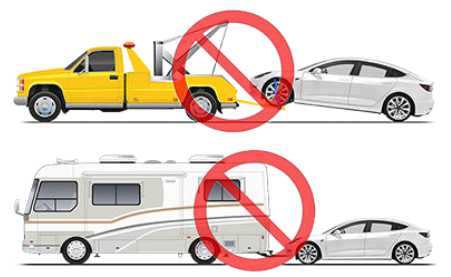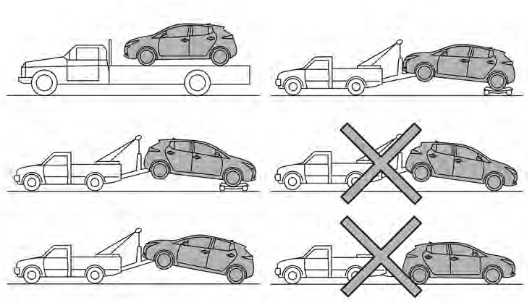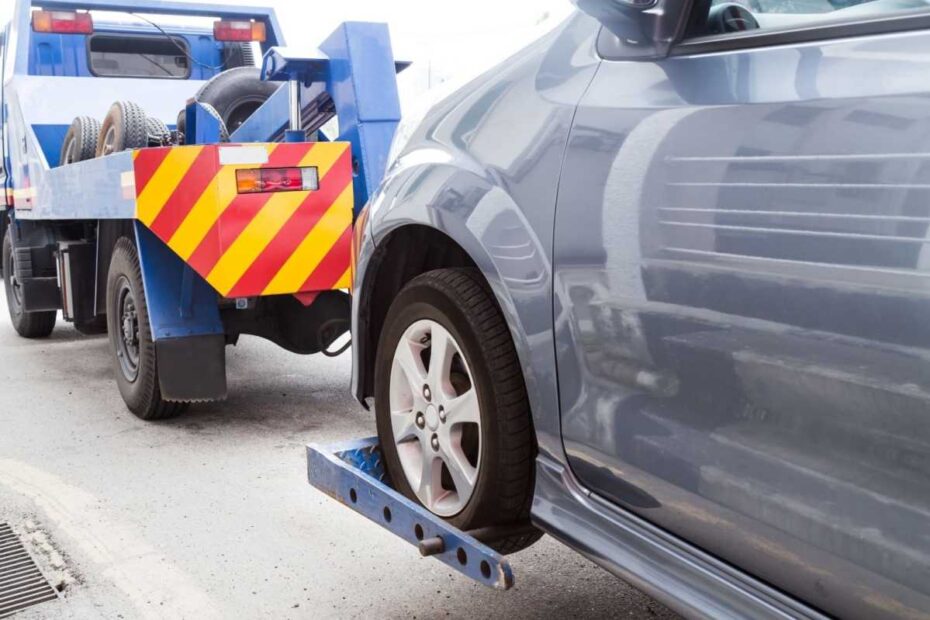If you are stuck on the side of the road, either from a depleted battery or a mechanical failure, most likely a tow is in your immediate future, but can you tow an Electric Car?
I wondered the same thing. Luckily I was in the comfort of my living room when the thought struck me, not the side of the highway.
The answer is Yes, you can tow an electric car, but not necessarily in the way that most are used to. You need to fully understand which model you own, and which wheels have motors attached to them, and confirm the proper procedure in your owner’s manual before having your car towed.
Electric cars work, essentially by putting electrical power into a motor that turns the wheels. When the wheels are turning and no power to the motor is applied, the motor acts as a generator and sends electricity back to the battery.
This process works great when the car is on and operating properly and allows you to recharge the batteries slightly when you lift off the throttle.
A depleted or damaged car that is not operating as intended and being towed in a conventional way will still generate electricity. This can create excessive heat and damage to the battery and even ignite components in the electric drivetrain. You don’t want any of that to be sure.
Proper EV Towing procedure
Let’s take the Tesla Model 3 For example. It is available in either a dual-motor AWD or single-motor RWD. The Model 3 user manual states that the car should not move, except under its own power for more than a few feet and at less than 3 mph. Essentially, nothing more than pushing your car. See post here ” Can you push an EV”
Your options for towing are either to use a flatbed tow truck thus being sure the wheels do not touch the ground or the use of a dolly that lifts the drive wheels off the ground.


When pulling the car onto the flatbed, be sure to enable transport mode which will keep the parking brake disengaged while moving the vehicle.
You can read more about these requirements here in the official Tesla Model 3 owners manual.
A Nissan Leaf, as another example, is a front where drive (FWD) car with only the front wheels connected to a motor. As such, you could tow the Nissan leaf in the traditional way by lifting the front and letting the rear wheels rotate freely.

A link to the Nissan Leaf owners manual is here
This is not an exhaustive list as I’ve only mentioned a couple of cars. What I want to stress is that you will never be stranded on the side of the road for long, but you need to be sure that when your car is being towed it is being towed correctly to ensure that no damage is caused.
Lastly, if your car has simply run out of power and there is no mechanical damage, request a roadside charge. This way you don’t even need to worry about the hassles of a tow. There are a few services that offer this. You would be on your way to a charging station in about 10 minutes without having to have your car towed at all.
Towing Safety Considerations:
When it comes to towing an electric car, safety is the top priority. Unlike traditional gas-powered cars, EVs have high-voltage batteries and sophisticated electronic systems that require specialized handling. It is essential to follow the manufacturer’s instructions carefully to avoid damaging the vehicle or putting yourself and others in danger. Never attempt to tow an electric car yourself unless you are a certified professional, as it can be dangerous and result in further damage to the car.
Recommended Towing Methods:
There are two recommended methods for towing an electric car, flatbed towing and dollies. Flatbed towing is the most common and safest method of towing an EV. It involves placing the car on a flatbed truck, which keeps all four wheels off the ground. This method ensures that the car’s transmission and wheels are not damaged during the tow. Dollies can also be used to tow an electric car, but they require disconnecting the drive wheels, which can be more complicated and require specialized equipment.
Finding a Towing Service:
It is essential to find a towing service that has experience with EVs to ensure that the vehicle is handled correctly. Not all towing services are equipped to handle electric cars, so it’s important to do your research and find a reputable service that can handle your specific make and model. Additionally, you should make sure that the towing service has the necessary equipment and training to handle EVs safely and correctly.
Conclusion:
Towing an electric car requires specialized handling and equipment to ensure safety and prevent damage to the vehicle. Flatbed towing is the recommended method for towing an EV, as it keeps all four wheels off the ground and prevents damage to the car’s transmission and wheels. It is essential to find a towing service that has experience with EVs and the necessary equipment and training to handle them safely. Always follow the manufacturer’s instructions carefully and never attempt to tow an electric car yourself unless you are a certified professional. By taking the necessary precautions, you can ensure that your electric car is handled safely and correctly in case of a breakdown.
